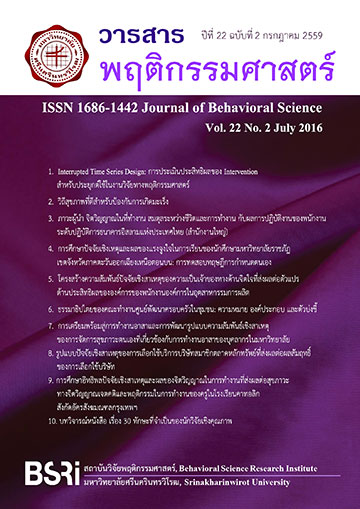The Dhammadhipateyya of the Committee of Family Development Community Center: Meaning, Component and Indicators
Abstract
The objective of this study was defines and develop indicators of the Dhammadhipateyya of the committee of family development community center. The committee formed by the community leader, teachers and volunteers who the key person participated in the project on development of families in the community. Key Informants were 9 cases consist of monk and academic expert in Buddhism, political science and community development. Research method started from definite the Dhammadhipateyya of the committee of family development community center concept, broking down the concept into main components, and then selecting indicators pertaining to each dimension. The research found that the Dhammadhipateyya of the committee of family development community center or conscious virtue means the decision making based on accuracy in performance or any action which under the social rules, sacrifice and generosity that complementary for the benefit and happiness of people in their community. Indicators of the Dhammadhipateyya of the committee of family development community center had 4 components, 32 indicators. First, had wisdom – understanding about the community situation, knows how to prevent and resolve family’ problem in their community (8 indicators). Second, had principles that based on kindness and generosity (8 indicators). Third, No prejudice – not allowing self’s emotion or feeling such as bias from satisfied, bias from unsatisfied, bias from fear and bias from a lack of knowledge or misunderstanding (8 indicators) influencing their decision making in working or lifestyle. Finally, Love and behave the rightness – working or behave toward others with kindness and generosity (8 indicators).
Downloads
Downloads
Published
How to Cite
Issue
Section
License
Behavioral Science Research Institute, SWU
114 Sukhumvit 23, Bangkok 10110, Thailand.
Tel.02-649-5000 # 17600



